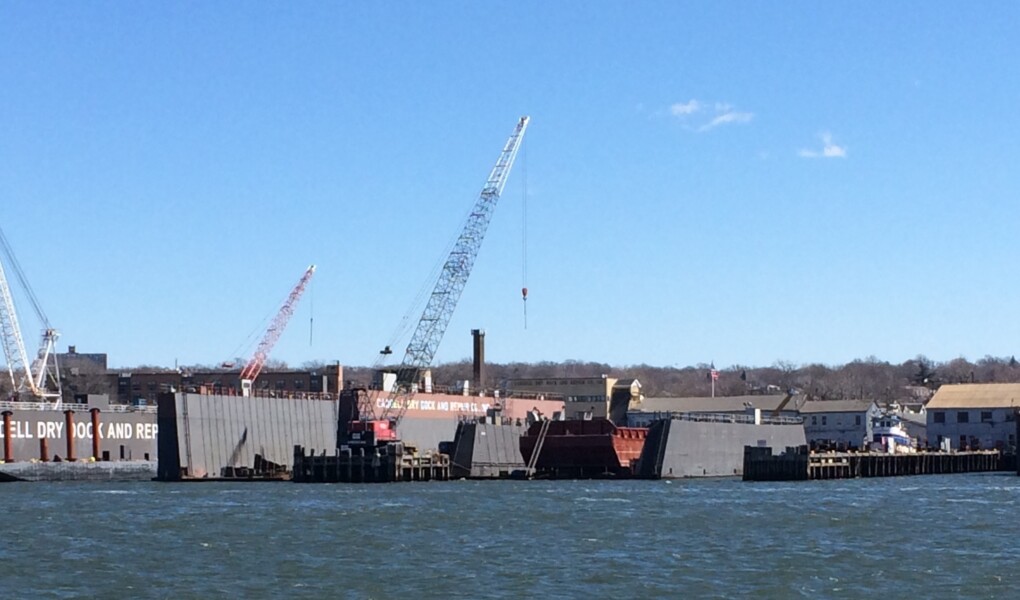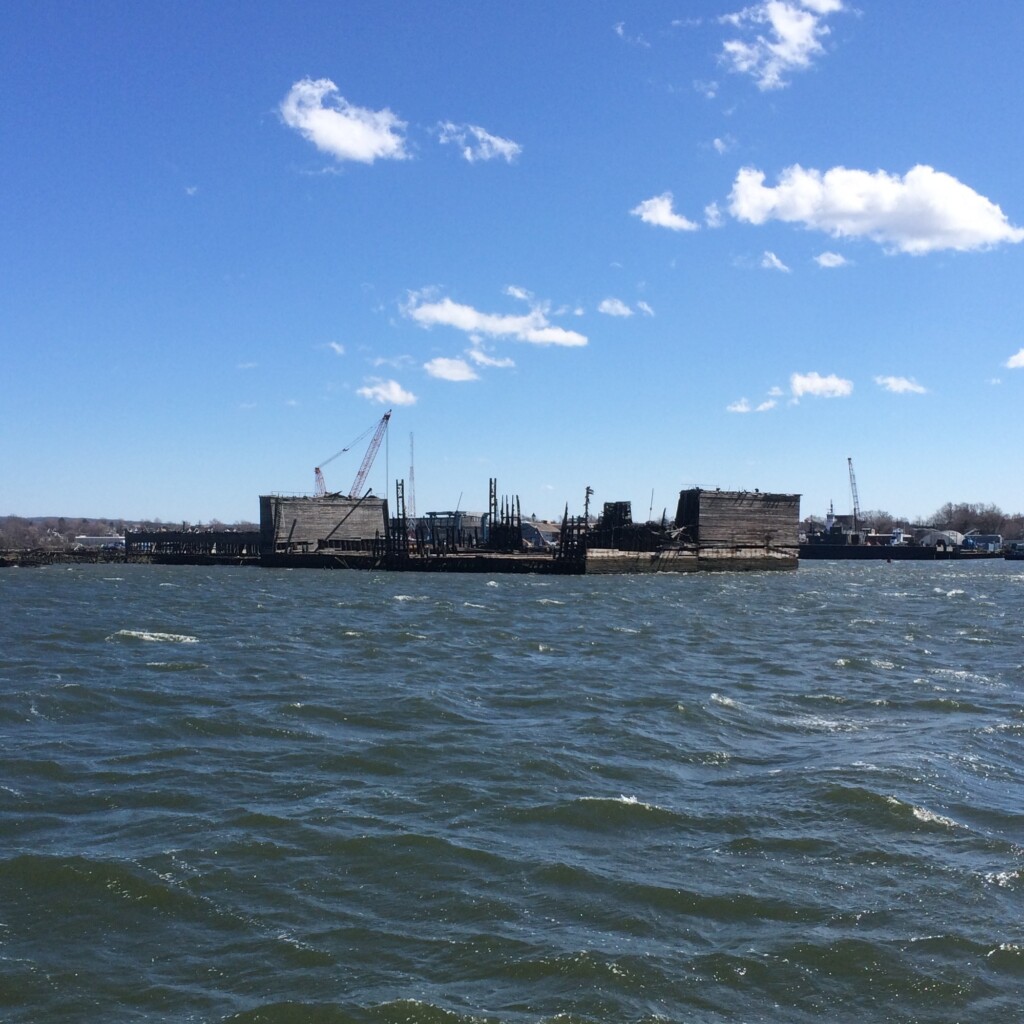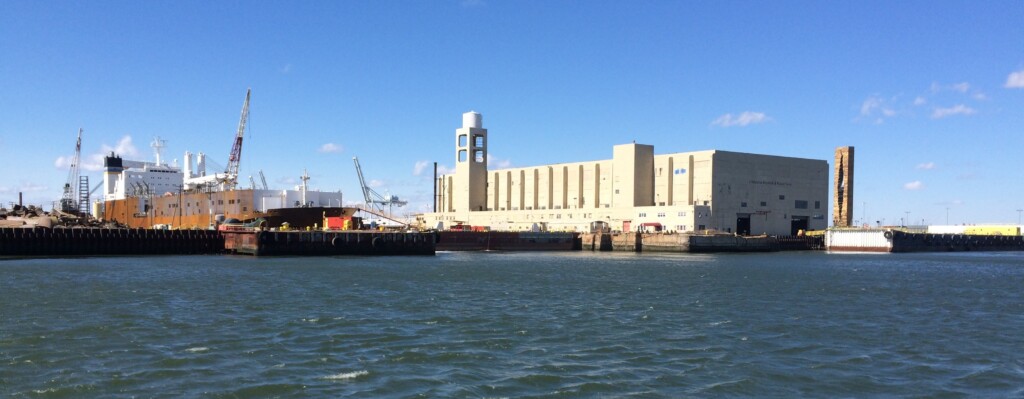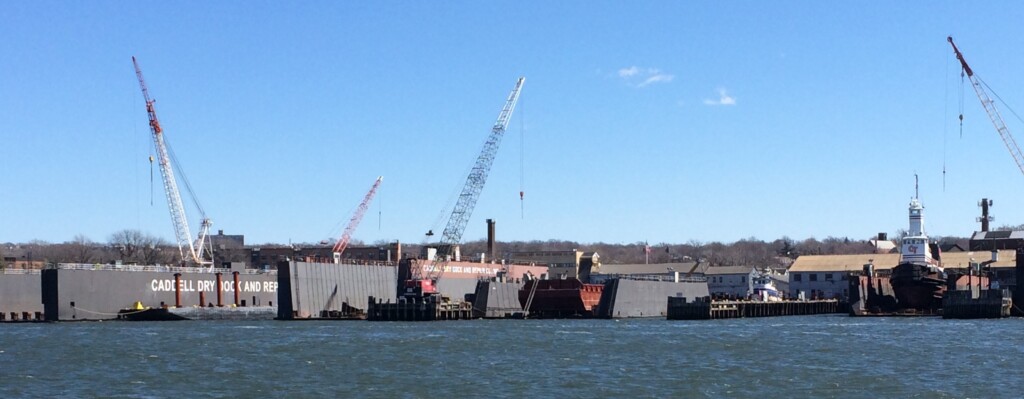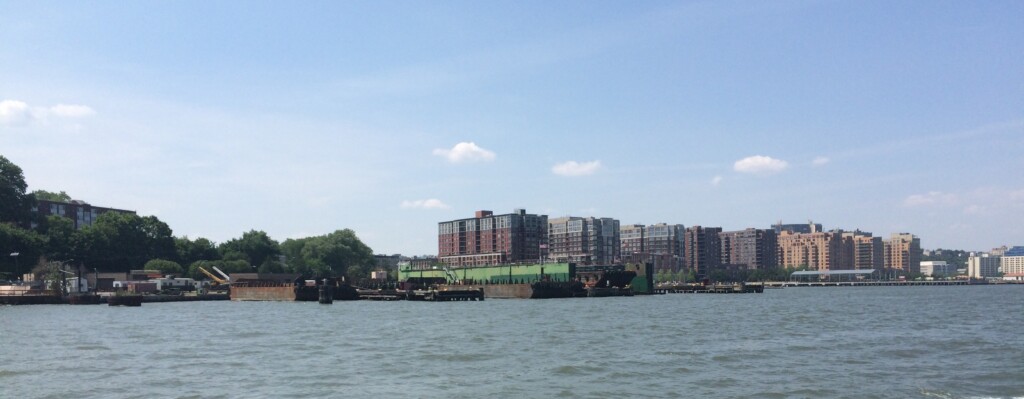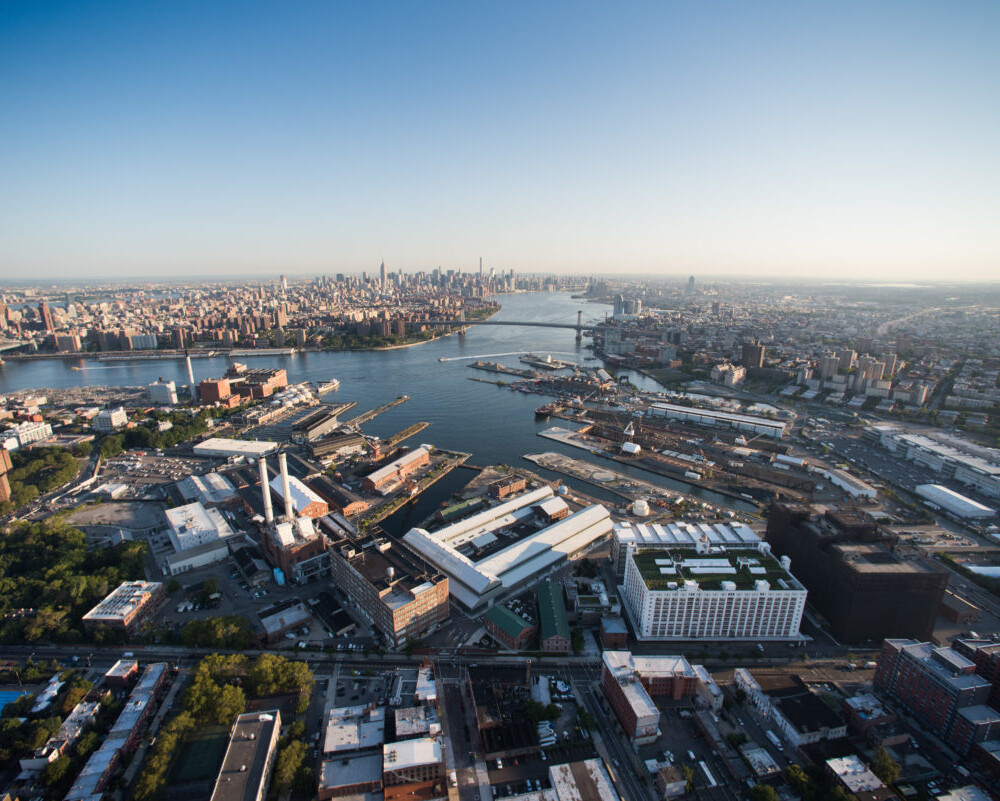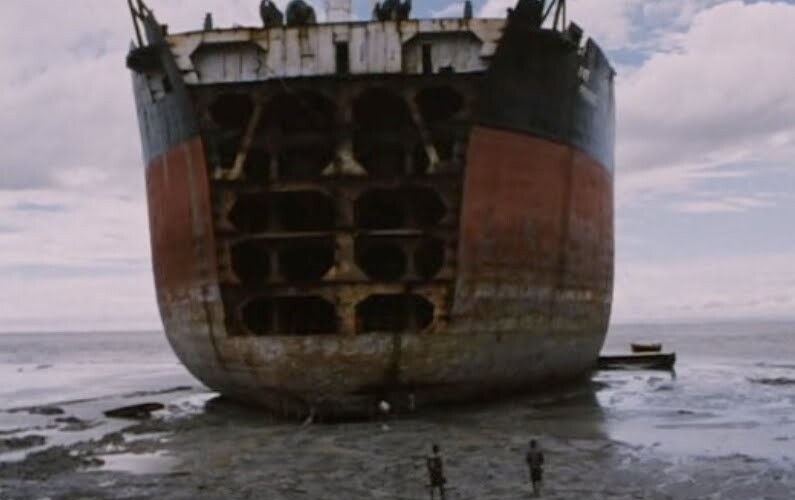For more than 150 years, shipbuilding was a pre-eminent industry in New York City. Shipyards building clipper ships, steamboats, and naval frigates once engulfed the shoreline of Lower Manhattan in the early 19th century, bearing names like Brown, Bergh, Westervelt, and Webb, eventually spilling onto the Brooklyn side to form a massive shipbuilding complex on the East River. As the industry – and the city – grew, major shipyards could be found in all five boroughs and across the Hudson in New Jersey.
Perhaps the high water mark, at least in terms of overall employment in shipbuilding, was during World War II, when New York Harbor boasted more than 40 shipyards. They ranged in size from enormous Brooklyn Navy Yard, which employed more than 70,000 people, to smaller yards like Gravesend’s Wheeler Shipyard, which made more than 200 wooden patrol craft for the Coast Guard. While many of these shipbuilders closed or scaled down dramatically after the war, the industry soldiered on for a couple more decades in New York. Eventually, competition from lower-cost markets abroad and in the South led most of the shipbuilders to close up by the 1970’s.
Today, you can still see remnants of many of these yards – Todd Shipyard covered by the Brooklyn Ikea parking lot, or the rotting husk of Standard Shipbuilding’s floating dry dock off Shooters Island (pictured right) – but New York Harbor is still home to a handful of shipyards, mostly focused on ship repair, not construction. Many of them rely on legacy infrastructure, some from World War II, some dating back even to the 19th century, to provide essential services to the working vessels of the harbor. The Port of New York and New Jersey remains the third-busiest container port in the United States, trailing only Los Angeles and Long Beach, CA, and is by far the largest on the East Coast. With so much traffic in the harbor, it is critical that we have capable, local shipyards that can keep these commercial fleets in good working order.
Here are the six shipyards still working in New York Harbor:
GMD Ship Repair, Brooklyn Navy Yard
For 165 years, the Brooklyn Navy Yard was one of America’s leading naval shipbuilding and repair yards. Founded in 1801, it built such famous ships as the USS Arizona, Missouri, and Constellation, and covers more than 300 acres of the Brooklyn waterfront. Following the closure of the Yard in 1966 and its sale to the City of New York, a succession of shipbuilding and repair companies moved in to make use of the sprawling facilities. Seatrain Shipbuilding built oil tankers and other large vessels from 1969 until their bankruptcy 10 years later. Coastal Dry Dock did repair work there starting in 1971, but they too went out of business in 1986.
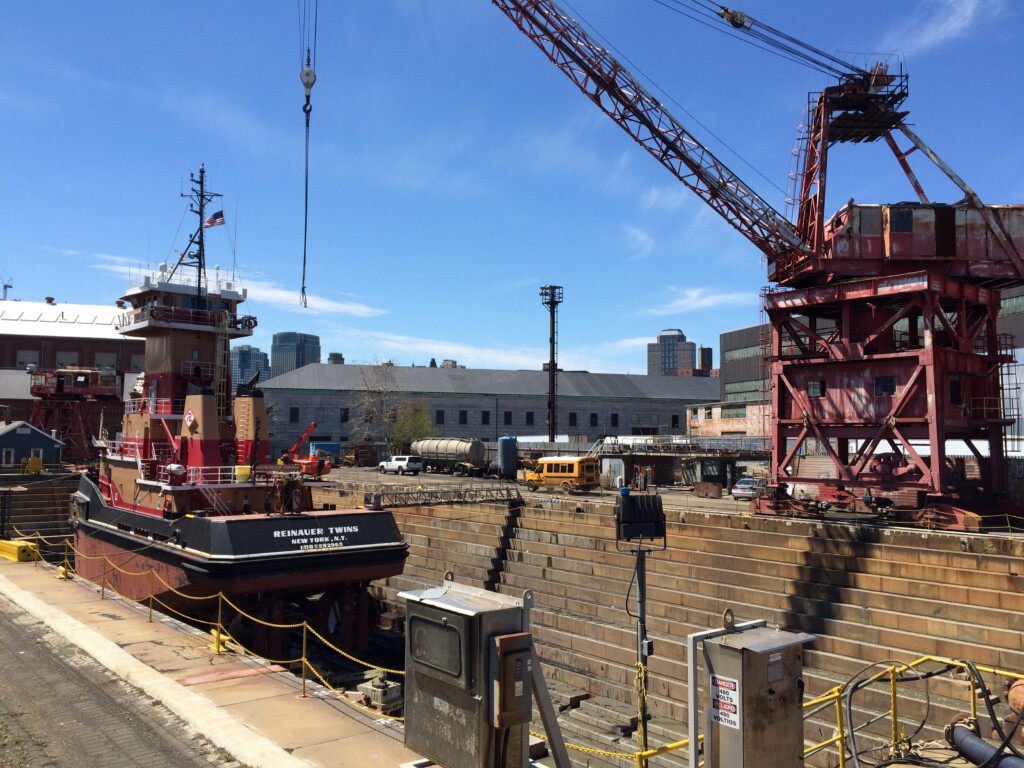
Since then, three of the Navy Yard’s dry docks have been occupied by GMD (formerly known as General Marine Diesel). Two of the dry docks (nos. 5 and 6) were built in the early stages of World War II – 1,092-foot-long concrete graving docks (land-based dry docks) that are some of the largest in the country. Regular customers to this docks include cargo vessels, training and research ships, and cutters of the US Coast Guard. GMD also operates Dry Dock No. 1; completed in 1851, this granite graving dock still functions well and regularly hosts barges, tugboats, and ferries in its 350-foot basin, despite being the third-oldest dry dock in the nation (and you can visit it on all of our tours). Today, GMD is just one of more than 330 businesses inside the Brooklyn Navy Yard industrial park that employ more than 7,000 people.
Bayonne Dry Dock, Bayonne, NJ
Operated by GMD’s sister company, the Bayonne Dry Dock is also built around a World War II-era facility. This complex was originally known as the Brooklyn Navy Yard Annex, or Dry Dock No. 7, and has a single dock built to the same dimensions as 5 and 6 in Brooklyn. In addition to providing additional capacity to the Navy Yard, Bayonne also happened to be south of all of the relatively low bridges that cross the East River, making it easier to bring in large aircraft carriers than in the close confines of Wallabout Bay. Bayonne Dry Dock has operated here since 1997 – shortly after the military gave up the site – and they use it for similar purposes, serving ships that cannot reach the main GMD yard. One of their most frequent customers is the Military Sealift Command, which operates Navy-owned, civilian-crewed supply ships. Between Bayonne and the Navy Yard, theses companies operate all four of the working graving docks left in the region.
Caddell Dry Dock & Repair Company, Staten Island
The oldest shipyard in the harbor, Caddell has been in continuous operation since 1903. Originally founded in Brooklyn, it moved to its current location on the island’s north shore in Port Richmond in 1916. The company is the largest operator in the region of floating dry docks – the specially-built barges have large vertical compartments that can be flooding, bringing the deck below the water’s surface, so a ship can be positioned over it and then raised out of the water when the compartments are pumped out. Caddell has seven ranging in size from the 1,200-ton Dry Dock No. 4 to the massive 400-foot, 7,500-ton No. 1. In addition to dry docking, the company offers a full suite of repair services, from engine work to structural repairs to scraping and painting. Their customers are primarily tug and barge operators, but they have experience and expertise to work on variety of vessels, including historic ships – they recently completed a restoration of Albany’s World War II destroyer escort USS Slater, and they are currently overhauling the South Street Seaport Museum’s Wavetree.
May Ship Repair, Staten Island
The only shipyard in the region that still does vessel construction, Mayship occupies a small portion of the former Staten Island Shipbuilding/Bethlehem Shipbuilding Corp. that once dominated Mariners Harbor, building dozens of ships for the Navy in World War II. That shipyard closed in 1960, and Mayship moved in 1982, working alongside tug and barge operators Kirby and McAllister that also have facilities on the site. Mayship has three floating dry docks – one of which was recently constructed to replace one destroyed by Superstorm Sandy – as well as a 600-ton marine travelift and a shipway (a ramp for building and launching ships). Their specialty is in engine repair work, but they also build vessels, primarily barges, floating docks, and other un-propelled craft. They also built dry docks no. 7 and 8 for their neighbors at Caddell.
Union Dry Dock & Repair Company, Hoboken
In business since 1908, this pair of floating dry docks is the last vestige of what was once a vast complex of shipyards and commercial piers in Hoboken, NJ. Founded in Weehawken, the company moved a short distance down river to its current location in 1983. The company’s two docks have a capacity of 1,200 and 400 tons, and they are used primarily for barge repair. For the last several years, many proposals have been floated to buy and develop the site, for residential towers, a transit hub, and parkland. But for the time being, Union Dry Dock is still working.
[UPDATE 5-30-2018: Union Dry Dock finally closed its doors this past winter, and its two dry docks were sold off, though both have remained in New York Harbor. Bayonne Dry Dock acquired the 1,200-ton dock, while the other is now in the Erie Basin Bargeport. The future of the site is still in questions, however; many would like to see it acquired by the city of Hoboken for a waterfront park, while the New Jersey Department of Transportation has a proposal to use it as a ferry maintenance facility.]
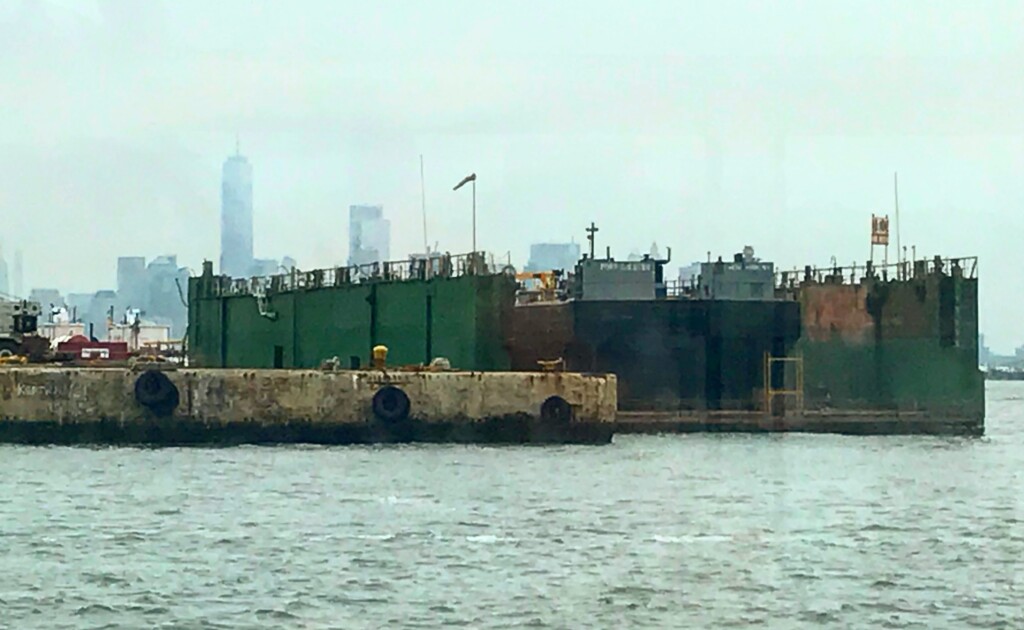
Erie Basin Bargeport, Brooklyn
This facility in Red Hook is one of the largest staging areas for barges and tug boats in the region, operated jointly by Reinauer Transportation and Hughes Marine. Hughes Brothers is one of the venerable Irish family-owned tug and barge companies that have dominated the industry since the late 19th century, along with companies like Moran and McAllister; Reinauer is no newcomer either – they were founded in 1923. Together, they provide barges for a wide variety of industries, from construction to bulk cargo to petroleum products. This site was formerly owned and operated by the Port Authority, but it was purchased by Hughes and Reinauer in 1991. In addition to their berths, warehouses, and repair facilities, the bargeport also has one floating dry dock for barge repair work.

